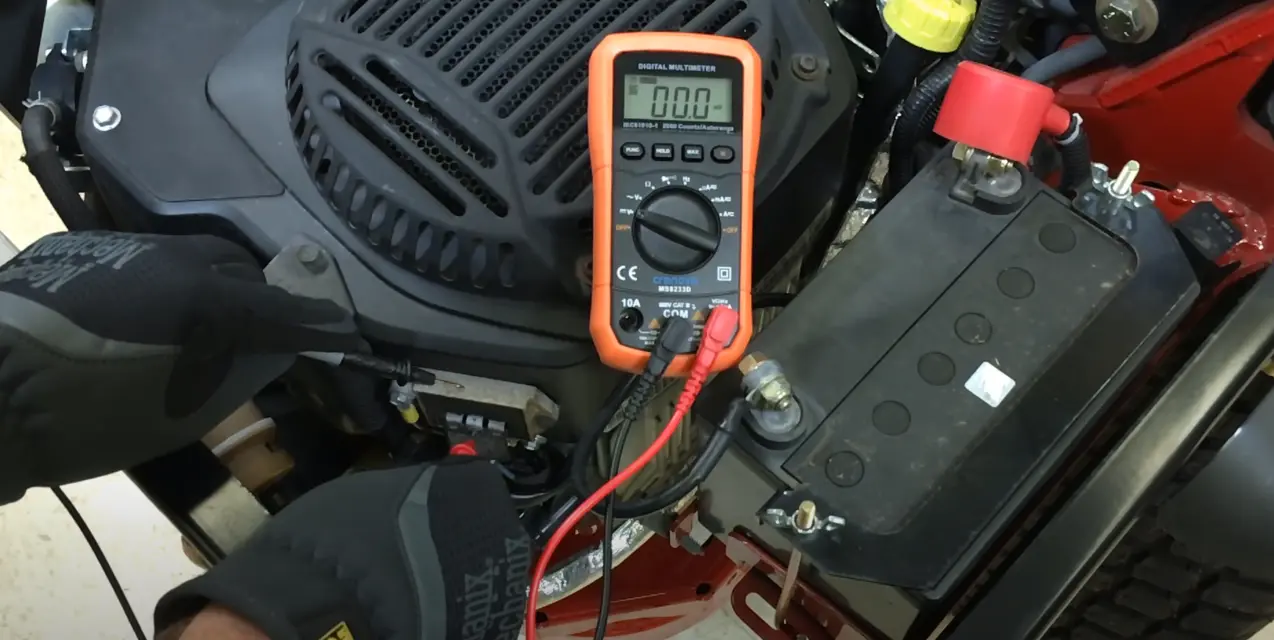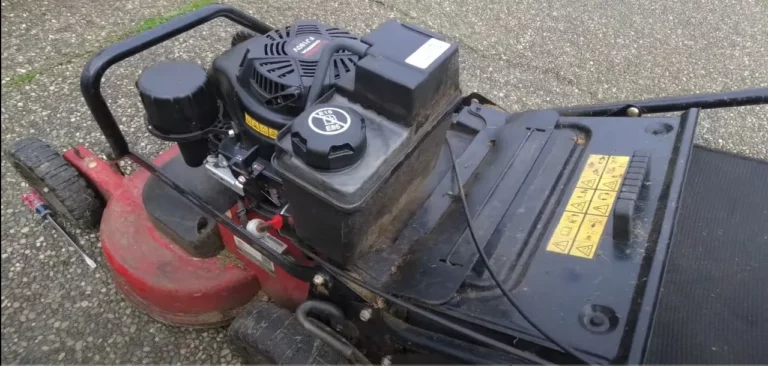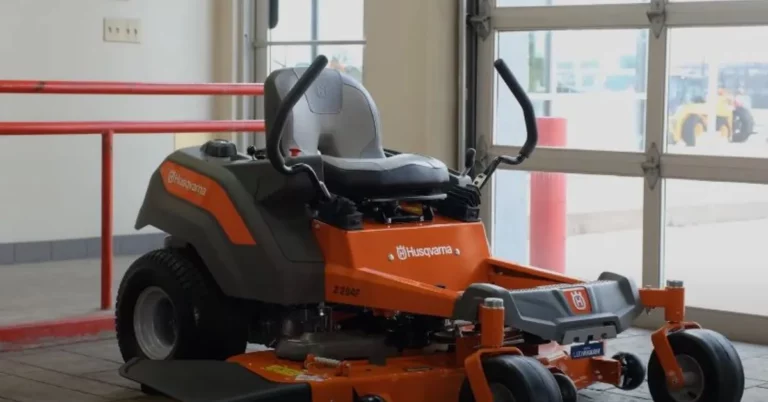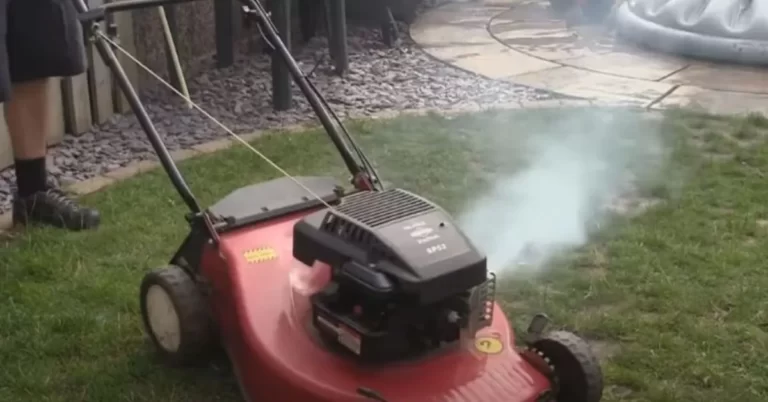Symptoms of a Bad Voltage Regulator on a Lawn Mower
Lawnmowers are essential for anyone who wants a healthy, well-maintained lawn. From gas-powered mowers to battery-powered ones, there are many types for you to choose from.
However, regardless of your mower, your lawn mower will only work if the voltage regulator is good.
Symptoms of a bad voltage regulator on a lawn mower may include the battery overcharging or undercharging, flickering or dimming lights, an erratic engine, or the mower not starting. Other signs might be a dead battery, frequent bulb replacement, or irregular voltage readings.
In this blog post, I’ll take a closer look at the symptoms of a bad voltage regulator on your lawn mower and how you can recognize them.
6 Symptoms of a Bad Voltage Regulator on a Lawn Mower

1. Dim headlights
If the voltage regulator is bad, your lawn mower’s headlights or taillights may not shine brightly. You may need a new voltage regulator if you notice any dimming or flickering lights.
2. Dead battery
If you notice that your lawn mower’s battery is dead, despite repeated attempts to charge it, it may be a sign that the voltage regulator isn’t functioning properly.
If you cannot get your mower started despite connecting it to a charger, it’s time to inspect the voltage regulator.
Also Read: Bad Lawn Mower Fuel Filter Symptoms (6 Problems)
3. Smell of burnt rubber
If you detect a smell of burning rubber while mowing the lawn, it’s usually a sign of a faulty voltage regulator. This occurs when the voltage regulator overheats because it can no longer regulate the charge.
4. Unstable engine
Your lawn mower engine may suddenly die or struggle to start, indicating that the voltage regulator is struggling to maintain the right voltage.
If this happens consistently, it might be time to investigate the voltage regulator.
5. Irregular speed of the generator
The generator’s speed will decrease due to a bad voltage regulator. If you experience a rough power failure or the engine idles. This will lead your mower to fail to operate.
6. Overcharging the battery
A voltage regulator that isn’t working properly can cause the battery of your lawn mower to be overcharged. This excess charge could damage your mower’s battery or other electrical components.
What is a voltage regulator?
A voltage regulator is an electronic device that maintains a constant voltage level in a lawn mower’s electrical system. It ensures that the voltage delivered to the battery and other components is always within the recommended range.
Without a voltage regulator, the electrical system could overload and damage other components, such as the battery or alternator.
Also Read: Symptoms of a Bad Solenoid on Riding Lawn Mowers?
Why is a voltage regulator important in a lawn mower electric system?
A voltage regulator is important for several reasons.
- First, it protects the battery from damage due to overcharging.
- When the charging voltage is too high, it can cause the battery to overheat and shorten its lifespan.
- VR prevents undercharging of the battery, which can result in a weak or dead battery.
- It ensures that other electrical components, such as the lights and ignition, receive the proper voltage.
Signs of a failing voltage regulator
If your lawn mower’s electrical system is not functioning properly, it could be due to a failing voltage regulator. Here are a few signs that your voltage regulator might need to be replaced:
- The battery is always dead or weak
- The lights or horn do not work properly
- The engine stalls or hesitates
- You hear a clicking sound from the electrical system
- A burning smell or smoke is coming from the electrical system
If you notice any of these signs, it is important to have your voltage regulator inspected by a professional.
Also Read: Common Exmark Commercial 30 Problems with Possible Fixes
How to maintain your voltage regulator?
To ensure that your voltage regulator continues functioning as it should, you must maintain it regularly. Here are a few maintenance tips:
- Check the battery voltage regularly to ensure it is within the recommended range.
- Clean the battery terminals and cables to prevent corrosion.
- Inspect the wiring and connections for signs of damage or wear.
- Replace the voltage regulator if it shows signs of failure.
When to seek professional help?
While the lawn mower owner can do some maintenance tasks, certain repairs and replacements require the expertise of a professional technician.
If you notice any signs of a failing voltage regulator or have concerns about your lawn mower’s electrical system, it is important to seek professional help.
A trained technician can diagnose the problem and recommend the best solution.
How to Test the Lawn Mower Battery Voltage?
To test if your lawn mower battery has the proper voltage, follow these steps:
- Turn off the mower and remove the key.
- Locate the battery. It’s usually under the seat or the hood.
- Use a multimeter, and set it to DC voltage.
- Connect the red probe to the positive terminal and the black one to the negative terminal.
- If the reading is around 12.6 volts, the battery is healthy. Below 12 volts, it may need recharging or replacement.
- Always refer to your mower’s manual for specific voltage requirements.
Frequently Asked Questions (FAQs)
How long can you drive with a bad voltage regulator?
Operating your lawn mower with a faulty voltage regulator for an extended period is not advisable.
A bad regulator can overcharge or undercharge the battery, leading to battery failure or damage to the electrical system components.
Can a bad voltage regulator cause no start?
Yes, a faulty voltage regulator can prevent your lawn mower from starting. It can cause an overcharged or undercharged battery, leading to starting issues.
It’s crucial to address any regulatory issues promptly to avoid further complications.
What are the main voltage regulator failure causes?
Voltage regulator failures are often due to age and wear. Other causes may include heat exposure, voltage spikes, or poor maintenance.
Regular check-ups and proper care can help prevent regulator failures and prolong the lifespan of your lawn mower’s electrical system.
Conclusion
By looking out for these symptoms of a failing voltage regulator in your lawn mower, you can quickly diagnose the problem.
Inspecting your lawn mower’s electrical system for signs of wear and tear and replacing the voltage regulator if necessary is critical.
Understanding how to recognize symptoms eliminates the frustration and ensures your lawn mower keeps running smoothly.
Remember to perform regular maintenance checks and immediately replace malfunctioning components, such as the voltage regulator.





![7 Common Simplicity Zero Turn Mower Problems [Fixed]](https://yardcurator.com/wp-content/uploads/2023/06/10-Common-Simplicity-Zero-Turn-Mower-Electrical-Problems-768x402.webp)
